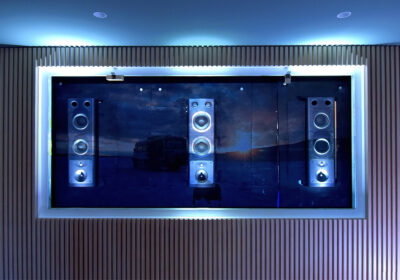As you wander through your local audio store you will notice that almost all turntables on the market are:
- Belt driven, and
- They are manually operated.
This has nothing to do with the fact that this design is cheaper to manufacture, which it undoubtedly is. It is more to do with the function of the turntable itself. Close inspection shows that the design of a turntable/vinyl system is archaic. It is a miracle that this technology works at all let alone producing such a sublime sound.
Good vibrations: isolating the mechanical ones makes for cleaner playback
The principle is that the styli moves inside the grooves of the record. This movement creates a miniscule electrical impulse via magnets housed inside the cartridge. These impulses are amplified, appearing as music via your speakers. As you can imagine this is an extremely delicate process, and extreme care needs to be taken that the only signal that the styli is exposed to is that that which has been presented by the record itself. The styli has no way of filtering out any influences external to the record being played. If the styli picks up vibrations caused by the mechanics of the turntable itself, e.g. motor noise or bearing noises from the arm this will be mixed in with the vibrations being picked up from the record. For this reason most turntable manufacturers restrict as much as possible any potential for external mechanical noises being transmitted to the styli.
It is important to note that these influences can also be external. As an experiment while playing a record – particularly at volume, put your hand on the plinth of the turntable. See how you can feel the vibration being caused by the music in the same way that your ear picks up the signal. Potentially this is transferred to the styli along with the signal it is retrieving from the record. While in most instances this is not reproduced as a sound or note it has the impact of smearing the music – you lose definition, imagery and dynamics.
In more severe cases it will manifest itself as a loud roar, the vibrations are severe enough to be intero-perated as a bass note which makes the speakers work harder, in turn increasing the vibration and so on – a phenomenon termed acoustic feedback. In reality this is an extreme manifestation of what is possibly happening in the background all the time.
At the same time we recognise that many people are uncomfortable with the fact that once the record comes to the end it continues to revolve until you manually stop it. I once went away for a long weekend only to discover on my return that I had left a record running the entire time.
Thorens, who commenced production of turntables in 1928 – have a solution. On their model TD-295, which sells for $1,599, they have an optical sensor under the platter which will determine when the record is at an end and trip the cueing device to lift the arm off the record, and shut down the motor. The beauty of this arrangement is that there are no mechanical devices used which can influence the performance of thee turntable.
While this is not a new technology I am surprised that it is not used more widely (in this case it may have more to do with cost!).




